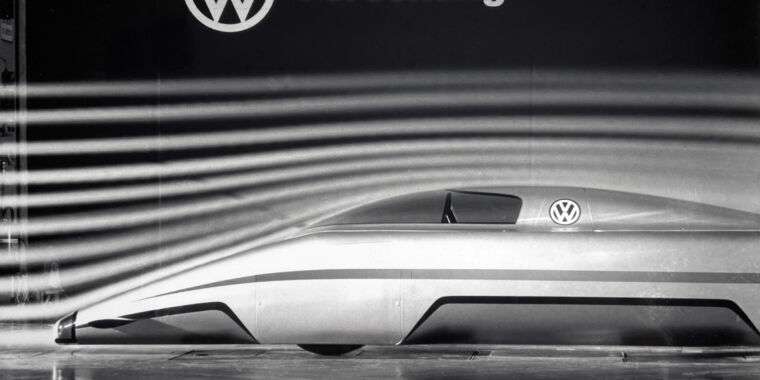
These streamliners are the world’s most aerodynamic cars
Inspired by VW’s ARVW concept, we look at the cars with tiny drag coefficients. …

reader comments
47 with 32 posters participating, including story author
-
In 1980, Volkswagen built the ARVW concept car, the most aerodynamic vehicle it has ever created. It achieved a drag coefficient (Cd) of just 0.15. By contrast, most road cars have a Cd of between 0.3-0.4.Volkswagen
-
The ARVW was able to reach 225mph (362km/h) at the Nardo high speed bowl.Volkswagen
-
The Model 3 (and now Model Y) has a Cd of 0.23, but only when fitted with the aero wheel covers.Sean Gallup/Getty Images
-
When a wheel rotates, it disturbs the air a lot, and that causes aerodynamic drag. That’s why electric cars often have wheel faces that are as close to being a solid disc as possible, while still allowing the brakes to cool.Christian Marquardt/Getty Images
-
The Porsche Taycan 4S (pictured) and Taycan Turbo have a Cd of 0.22 when fitted with these wheels.
-
In 2013, Mercedes-Benz tweaked the shape of its CLA 180 BlueEfficiency diesel to generate a Cd of 0.22.Mercedes-Benz
-
Four years later, BMW managed the same Cd of 0.22 with its 520d EfficientDynamics diesel.
-
In 1996, GM’s EV1 electric car had a Cd of 0.19. Sadly, almost all of these cars ended up in the crusher.General Motors
<li data-thumb="https://cdn.arstechnica.net/wp-content/uploads/2020/05/Volkswagen_XL1-2177-150×150.jpg"
Continue reading – Article source




